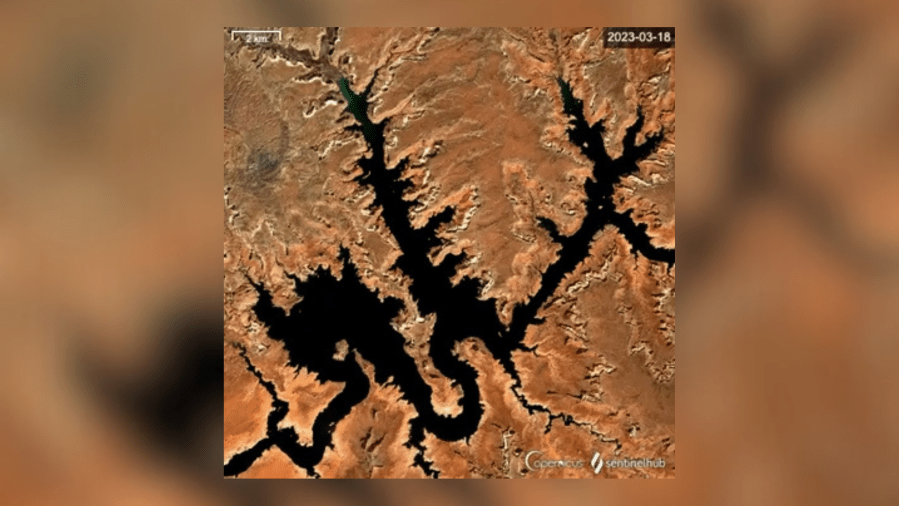With last winter’s snowpack largely gone, scientists are getting a better picture of the impact on the southwestern United States’ most critical source of fresh water: the Colorado River.
Satellite images captured by the European Space Agency’s Copernicus SENTINEL-2 satellites between March 18 and July 16, 2023, show water levels surging at Lake Powell, a man-made reservoir that straddles Utah and Arizona.
As of July 16, the lake’s water levels were up by 45.57 feet from last year, according to the Lake Powell Water Database, but still more than 100 feet below full capacity.
The Colorado River provides roughly one-third of all water for Southern California’s cities, suburbs and agricultural communities.

Dams at Lake Powell, Lake Mead and Lake Havasu also provide hydroelectricity for hundreds of thousands of homes and businesses in the southwestern U.S.
As Lake Powell and Lake Mead hit record low levels last summer, the U.S. Bureau of Reclamation told states they would need to cut their water use by 15% to 30%.
In May, after a year of heated disputes over Colorado River water usage cutbacks, the seven states that depend on it agreed to a consensus-based plan submitted by the three Lower Basin states.
The proposal, drafted by California, Arizona and Nevada, would commit those three states to collectively conservation of at least 3 million acre-feet of system water by the end of 2026, when the Colorado River’s current operating guidelines are set to expire.
The Associated Press contributed to this report.












